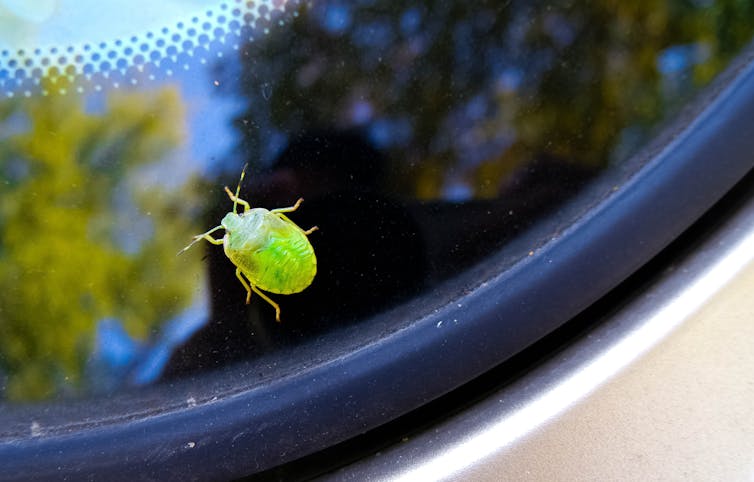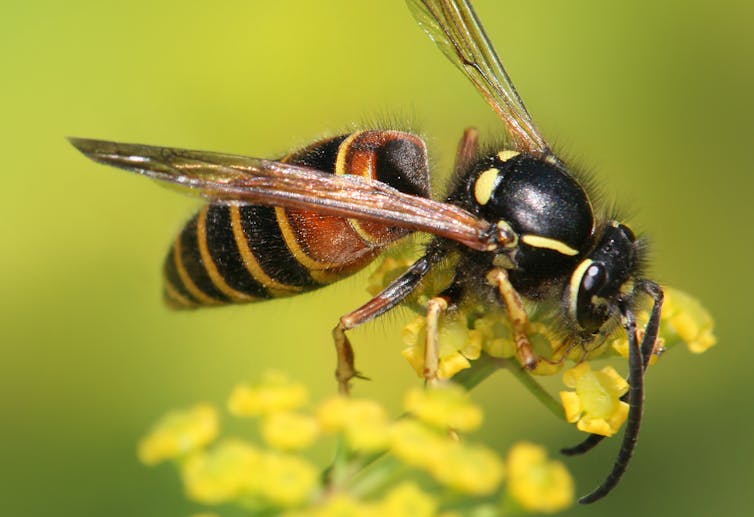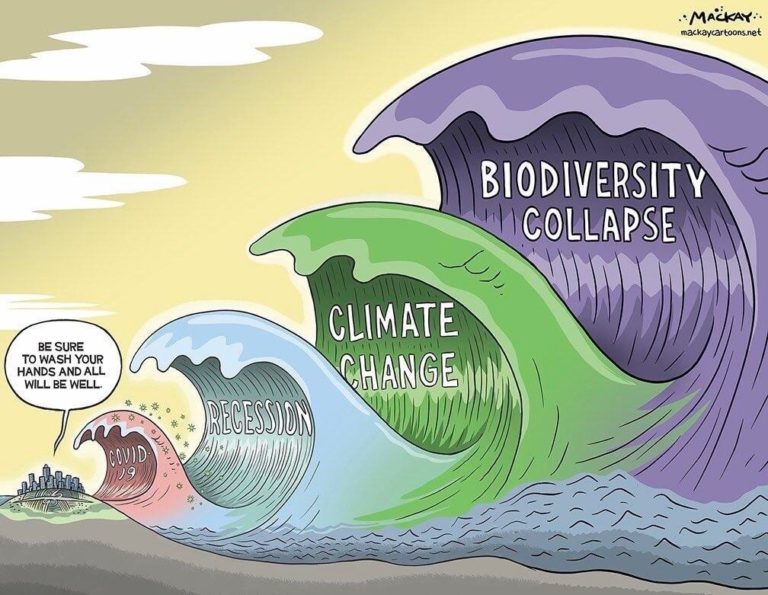
Saioa Legarrea Imizcoz, Universidad de La Rioja and María Ángeles Marcos García, Universidad de Alicante
Every summer for almost 20 years, volunteers from the Kent Wildlife Trust and Buglife, both in the UK, have been tracking car number plates. But not in the way you might think. Their inspections aim to register the number of flying insects hit by vehicles.
Though this may seem insignificant, the scale of this citizen science project makes it important. With nearly 700 participants, the 2023 Bugs Matter campaign has taken data from 6,358 journeys, which can help to draw much broader conclusions.
The results of the 2022 campaign showed a reduction, over less than 20 years, of 64% in the number of insects hit by cars. These results back up a thesis that worries scientists: this massive loss of insect life demonstrates that we are moving ever closer to the sixth mass extinction.
Agrotóxicos 🛩️💨🫧🚜🤢 pic.twitter.com/HNhGoHhMxb
— Enrique Viale (@EnriqueViale) March 17, 2022
The sixth mass extinction
Unfortunately, studies show that the UK is not the only place where insect populations are declining; studies have been done across Europe that draw similar conclusions. The most rigorous research uses historical studies that track insect populations over decades to gain realistic measurements.
In Germany, a 27-year-long study was published in 2017 showing that 76% of flying insect biomass has been lost within a vast network of natural spaces.
In Denmark, a reduction in the number of insects has been documented alongside shrinking numbers of birds, such as the barn swallow, who feed on them.
The Spanish and Portuguese scientific societies of entomologists met in June of this year in Alicante for the Twentieth Iberian Congress of Entomology. Alarmed by the decline of insect populations, they published a manifesto that aims to raise social awareness of this unprecedented situation and stop it.
However, the situation is not only causing alarm in Europe, which is very densely populated and exposed to the pressures of human activity. Studies from tropical forests in Puerto Rico have compared current insect numbers with those of 36 years ago, with similarly catastrophic results: a reduction of over 78% in ground-dwelling insect biomass. This study also showed a parallel decline in animals that eat insects, such as lizards, frogs, and birds.
Why are there fewer insects?
There are many causes, all stemming from the continuous, increasing deterioration of soil, vegetation, water, and air due to human activities.
Insects have various needs. They need the ground we cover with cement, the increasingly scarce water we pollute or divert, and the plants we treat with pesticides. Moreover, we interrupt the means of communication that insects need to survive: light, chemical, and air pollution all cause insects to become disoriented. Among other things, the number of airborne microscopic particles, which block their sensory organs and ways of communicating, is on the rise.
These are all occurring alongside climate change, which is considered to be an essential factor in declining insect populations in and of itself.
The loss of insect biodiversity leads to homogenization. This weakens the vital biological relationships between all living things and threatens our existence as a species.

Why are they so important?
Insects make up over 80% of the known animals in the world. It is therefore clear that they play many essential roles in sustaining life on Earth, most importantly that of pollinating plants.
35% of the world’s food supply comes from insect-pollinated plants. The UN Food and Agriculture Organization warns that if they were to disappear, food security would be at risk.
Another irreplaceable role that insects play in ecology is that of decomposing organic matter and recycling nutrients. Insects act as natural garbage collectors and gardeners. In this way, they contribute to soil health and formation, a process essential to maintaining food chains and life cycles.
Another ecological function of insects – often unnoticed – is their contribution to pest control in natural ecosystems, as they prevent or reduce pest damage.
Pest control by predators and parasitic insects in natural environments can actually teach us how to improve biological control in agriculture.
What can we do to protect them?
The actions of individuals cannot solve large-scale environmental problems. However, experience shows us that many small gestures can add up to achieve big results. Some of the things we can do are:
- Support or work with projects to raise awareness and protection for insects in rural and urban areas. The aforementioned Kent Wildlife Trust and Buglife are good examples in the UK. In Spain we have the SPIPOLL project, the uBMS Citizens’ Butterfly Observatory, and the Spanish Network of Biosphere Reserves’ Phenological Monitoring Programme.
- Ensure that urban green spaces – verges, roundabouts, and other undeveloped areas – contain animal habitats and native flora, which can provide breeding sites and refuge for insect species.
- Refrain from using pesticides in private gardens or vegetable patches and, where possible, in public green spaces. Limit the removal of “weeds” growing around ornamental plants, especially during flowering periods.
- Consume food products following good agricultural practices that value and promote organic farming and biological or integrated pest control.
- Replace livestock pest control treatments with products that are not harmful to insects that help in the decomposition process.
- Avoid introducing invasive plant or animal species, both in agriculture and gardening.
All of us, in particular educators, are responsible for showing both children and adults that insects are noble, vital, and beautiful. Their declining numbers are an unprecedented problem, and our survival as a species is at stake if we cannot reverse this trend.![]()
Saioa Legarrea Imizcoz, Investigadora en Entomología Agrícola, Universidad de La Rioja and María Ángeles Marcos García, Entomóloga, Catedrática de Universidad, Universidad de Alicante
This article is republished from The Conversation under a Creative Commons license. Read the original article.




Comments are closed.